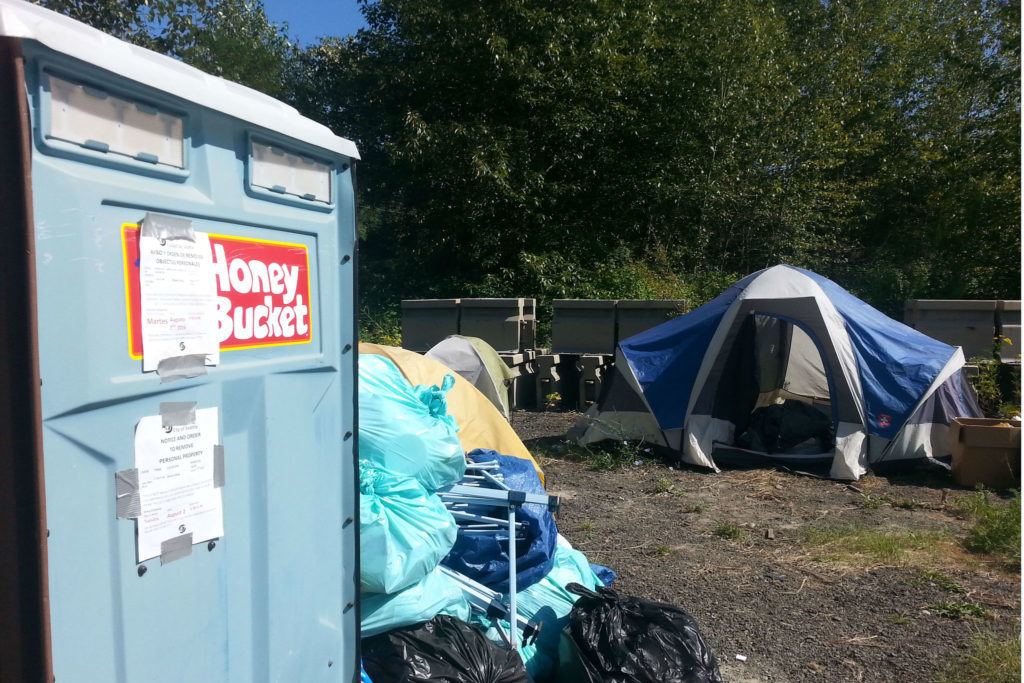Yesterday, Mayor Ed Murray staffers met with the City Council’s Human Services and Public Health committee to deliver an update on their short-term plan for addressing homelessness. A major subject of discussion was the need to improve garbage removal.
“I share the frustration of many citizens who wonder why the city isn’t acting more aggressively to clean up trash,” said councilmember Tim Burgess.
“That’s what we hear about more than anything, is garbage,” replied George Scarola, Murray’s homelessness czar. “There’s a real effort to grab onto this issue,” he continued. “It’s complicated, but it’s working. Slowly.”
Scarola was referring to trash pickup, but his statement could apply to the rest of the meeting’s content. According to yesterday’s briefing, city government has made some small, piecemeal improvements in aiding both homeless people and long-suffering neighbors who have to sometimes see or interact with them. Notable success include:
- The Green Lake Community Center serves about a thousand showers to homeless people per month, with no fee.
- The city’s sharps disposal containers are getting filled up with so many used syringes they’re going to start counting them by weight instead of individually. Seattle Parks is in the process of setting up five to ten more sharps disposal containers at Comfort Stations around the city.
- 100 lockers were recently added to a Queen Anne homeless shelter, so that guests have somewhere safe to store their belongings instead of carrying everything they own around with them. The lockers cost $2,500 total and took the council two years to accomplish.
- Seattle Public Utilities representative Ken Snipes told the committee that pilot “litter abatement” projects in Little Saigon, Chinatown/ID, and Ballard have been a great success. “In the ID,” he said, “people told us it’s the cleanest they’ve ever seen it.” SPU plans to expand the program into four more neighborhoods this year.
Despite these scattered accomplishements, the city’s new Navigation Center—a dormitory-style homeless shelter with intense services designed to quickly move guests into longer-term housing—will be delayed for an unknown amount of time. The Downtown Emergency Services Center (DESC) and Operation Sack Lunch will operate the center, but the site location and contract specifics are still getting hammered out. In the meantime, said Human Services Department representative Jason Johnson, HSD is working with DESC to establish “pop-up” locations where homeless people can get services without shelter.
On the other hand, three newly sanctioned encampments are on their way, in Georgetown, Greenwood, and near the White Center border. The city will hold outreach meetings with local neighbors in the next couple weeks, and the camps should all be operational by the end of March. Mayoral staff say he will use the powers granted to him by Seattle’s ongoing state of emergency to expedite the new camps. A fourth camp has been promised but there are no details on it yet.
The last site is Camp Second Chance. We first reported on Camp Second Chance in August 2016, when it was on the verge of eviction by Seattle officials. At the time we editorialized, “Camp Second Chance should get a long-term site to live on.” Now, they do.








